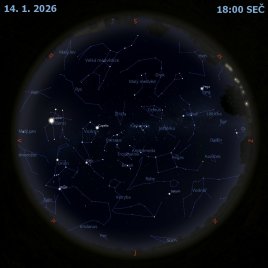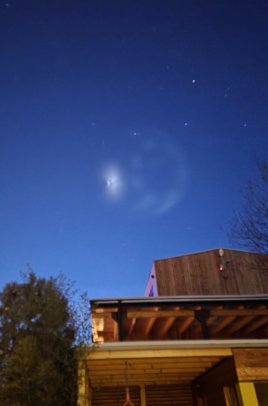Asteroid 2004 FH si to fičí kolem

Uznání a copyright: S. Sposetti & R. Behrend (Geneva Obs.)
Minulý týden se k Zemi přiblížil neobvykle blízko malý asteroid. Asteroid 2004 FH nepředstavoval žádné nebezpečí, ale stal se dost jasný, aby mohl být vidět i triedrem. Tento průlet asteroidu ve vzdálenosti jen 7 zemských poloměrů byl dosud nejbližší, který byl předtím předpovězen, přestože byl objeven před pouhými dvěma dny. Třicetimetrový asteroid 2004 FH na záznamu nahoře byl zachycen ze Švýcarska, když prolétal oblohou 18. března, téměř při svém největším přiblížení. Asteroid, který je ve středu asi 30 minutové filmové smyčky, mění svou jasnost, jak se převrací. Asteroid této velikosti prolétá tak blízko Země zhruba každé dva roky. Kdyby 2004 FH zasáhl Zemi, tak by asi shořel v atmosféře. Velké impaktní struktury na Zemi jsou svědectvími větších asteroidů a komet, které dopadly na Zemi v dávné minulosti. Astronomové pokračují v objevování, sledování a studiu potenciálně nebezpečných asteroidů s cílem učinit planetu Zemi bezpečnější.
NASA Official: Phillip Newman Specific rights apply. NASA Web Privacy Policy and Important Notices
A service of: ASD at NASA / GSFC & Michigan Tech. U.
Odkaz na originální APOD


